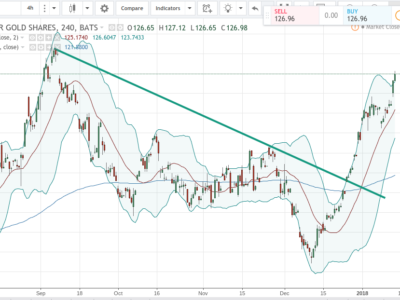5 Winning Strategies to Making it Big in the Stock Market
Stock investing is a powerful way to amass a fortune in your lifetime. If you’re looking for proof, Warren Buffett, George Soros, Peter Lynch, and dozens of other Wall Street-bred investors and business moguls serve as great examples. To achieve such grand statutes, you must do what these investing legends have done throughout their career – pick a strategy and stick to it.
The strategy you use will make a huge impact towards your bottom line. It has to fit your specific financial goals including timeline, risk appetite, technical background, and so on. Fortunately, rookies who are starting their investing career don’t have to start from scratch. There are many high-probability strategies that have been created and refined throughout decades of investing. Here’s five of them:
Day Trading
Perhaps the most popular active-trading approach, day trading involves buying and selling stocks within the same day. For example, if you buy 100 shares of company XYZ on a Monday morning, you sell it Monday afternoon before the exchange closes. No position is held overnight hence there is no overnight risk when day trading. However, because you trade short-term, the price charts, patterns, and indicators are often lagging and less reliable.
Price Action Trading
Price action uses naked price charts, or charts without any technical indicators. Instead, it uses a combination of MaPs and candlestick patterns. MaPs, or major psychological levels can help determine specific price points wherein a stock’s price will bounce off or pierce through. Price action traders rely heavily on common candlestick patterns, like Bullish Engulfing and Morningstar. Price action trading is versatile and can work on different time frames, whether it’s day trading, scalping, or swing trading.
Trade on Credit Spreads
If you’re looking for something simple yet reliable, credit spreads are a viable investment option. Instead of buying and selling stocks, you trade either vertical put or vertical call spreads. In a nutshell, it’s a spread that you sell in exchange for credit. This means you get the money upfront for the position that you just opened up. One defining characteristic of a credit spread strategy is that risk and reward are both predetermined so you know the maximum profit and loss you can make on any given trade.
Value Investing
Value investors look for stocks that are trading for less than what they are potentially worth in the foreseeable future. They actively look for stocks that have solid financials, a competent management team, and, most importantly, undervalued. Value investing, however, can be subjective, meaning that one investor might not see the underlying value of a stock that is being traded by another investor. To be successful with this particular strategy, look at stocks of companies that you use, such as Johnson & Johnson, Kellogg’s, Coca Cola, etc. If you have a decent amount of capital to start your investing career, value investing is perhaps the safest style there is.
Scalping
Scalpers trade at a time frame ranging between one minute to five minutes. Scalping is considered high-risk, especially in the stock investing world wherein roundtrip trades cost up to $15. This means you need a big enough position if you are to at least break even from broker commissions. Scalpers often use very strict parameters or technical indicators, such as moving averages or Bollinger bands, to generate actionable trade signals.
Stock investing, in its simplest form, is the buying and selling of value. Try to look at company stocks as operating businesses instead of numbers on a board. Build on healthy investor habits that foster consistent and sustainable portfolio growth while also maximizing capital returns over time. And while there are dozens of viable investing strategies including turtle trading and swing trading, it’s more practical to start off with simple but effective strategies that sport decent probability of winning, such as the five strategies aforementioned in this article.














